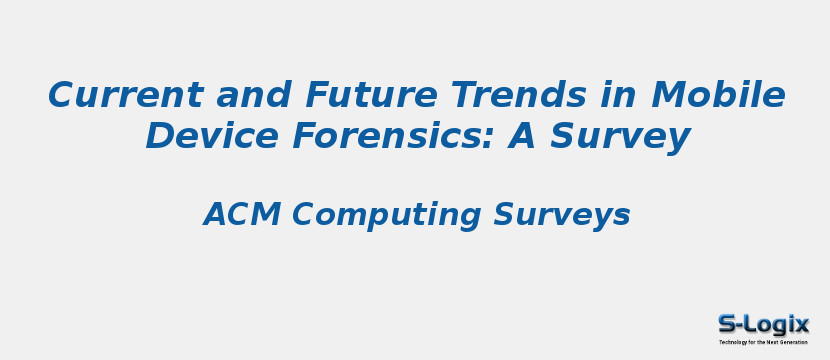Research Area: Digital Forensics
Contemporary mobile devices are the result of an evolution process, during which computational and networking capabilities have been continuously pushed to keep pace with the constantly growing workload requirements. This has allowed devices such as smartphones, tablets, and personal digital assistants to perform increasingly complex tasks, up to the point of efficiently replacing traditional options such as desktop computers and notebooks. However, due to their portability and size, these devices are more prone to theft, to become compromised, or to be exploited for attacks and other malicious activity. The need for investigation of the aforementioned incidents resulted in the creation of the Mobile Forensics (MF) discipline. MF, a sub-domain of digital forensics, is specialized in extracting and processing evidence from mobile devices in such a way that attacking entities and actions are identified and traced. Beyond its primary research interest on evidence acquisition from mobile devices, MF has recently expanded its scope to encompass the organized and advanced evidence representation and analysis of future malicious entity behavior. Nonetheless, data acquisition still remains its main focus. While the field is under continuous research activity, new concepts such as the involvement of cloud computing in the MF ecosystem and the evolution of enterprise mobile solutions—particularly mobile device management and bring your own device—bring new opportunities and issues to the discipline. The current article presents the research conducted within the MF ecosystem during the last 7 years, identifies the gaps, and highlights the differences from past research directions, and addresses challenges and open issues in the field.
Keywords:
Author(s) Name: Konstantia Barmpatsalou, Tiago Cruz, Edmundo Monteiro, Paulo Simoes
Journal name: ACM Computing Surveys
Conferrence name:
Publisher name: ACM
DOI: https://doi.org/10.1145/3177847
Volume Information: Volume 51, Issue 3, May 2019 Article No.: 46, pp 1–31
Paper Link: https://dl.acm.org/doi/10.1145/3177847
